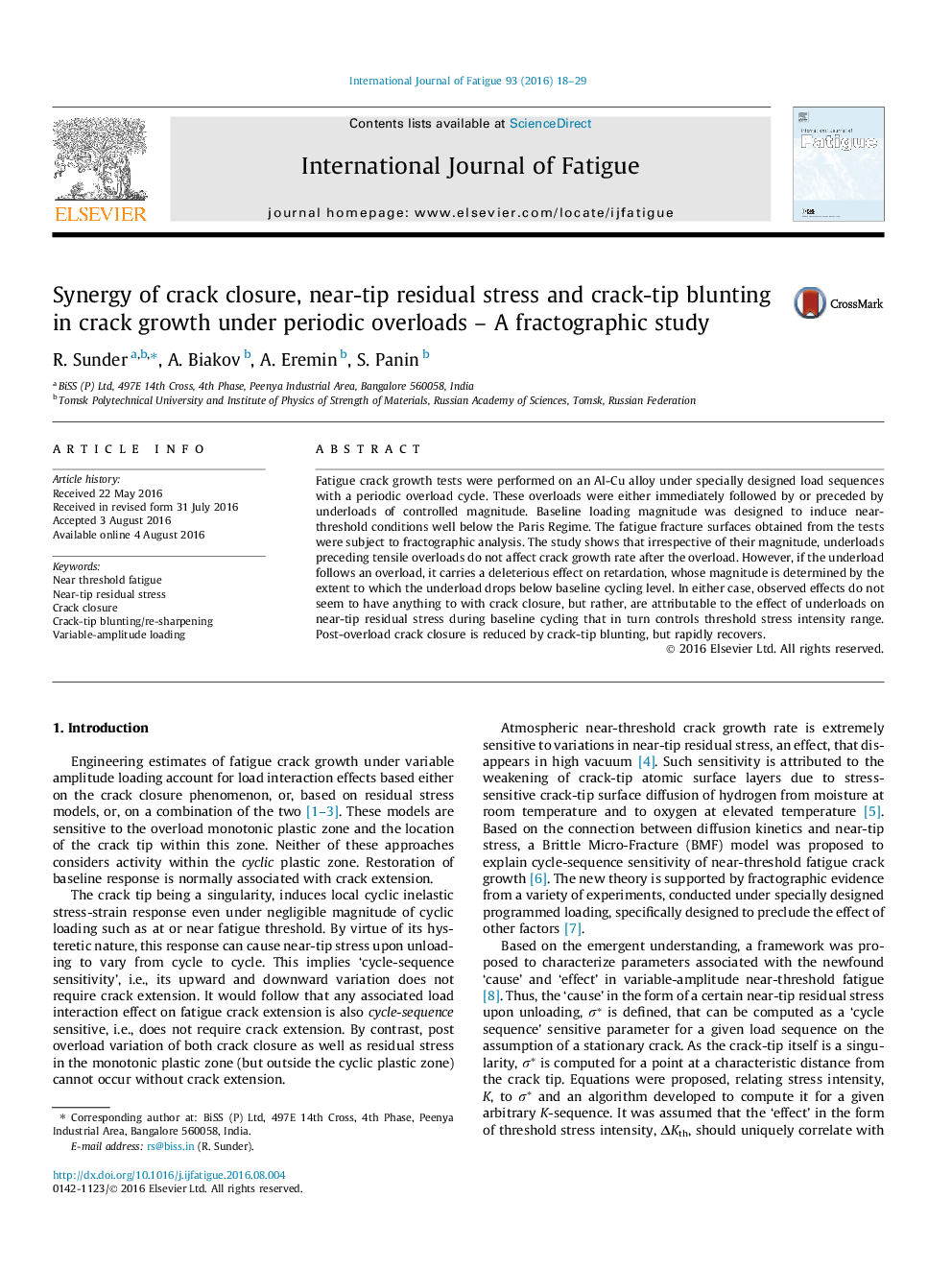| Article ID | Journal | Published Year | Pages | File Type |
|---|---|---|---|---|
| 780547 | International Journal of Fatigue | 2016 | 12 Pages |
•Specially designed programmed load sequences are used to generate fatigue fractures.•Quantitative fractography of the fatigue fractures identifies crack extension from individual load segments.•Comparison of these bands reveals synergy of three different mechanisms in variable-amplitude fatigue.
Fatigue crack growth tests were performed on an Al-Cu alloy under specially designed load sequences with a periodic overload cycle. These overloads were either immediately followed by or preceded by underloads of controlled magnitude. Baseline loading magnitude was designed to induce near-threshold conditions well below the Paris Regime. The fatigue fracture surfaces obtained from the tests were subject to fractographic analysis. The study shows that irrespective of their magnitude, underloads preceding tensile overloads do not affect crack growth rate after the overload. However, if the underload follows an overload, it carries a deleterious effect on retardation, whose magnitude is determined by the extent to which the underload drops below baseline cycling level. In either case, observed effects do not seem to have anything to with crack closure, but rather, are attributable to the effect of underloads on near-tip residual stress during baseline cycling that in turn controls threshold stress intensity range. Post-overload crack closure is reduced by crack-tip blunting, but rapidly recovers.
